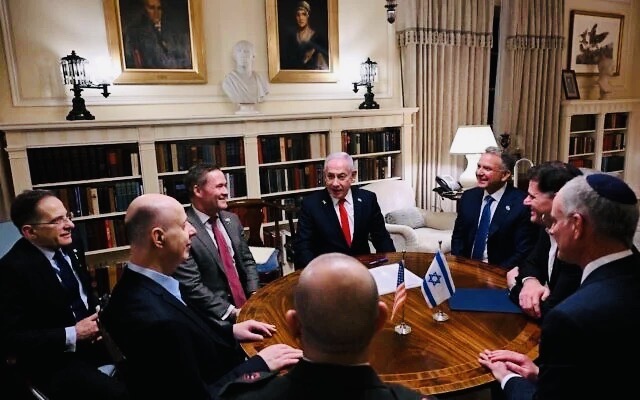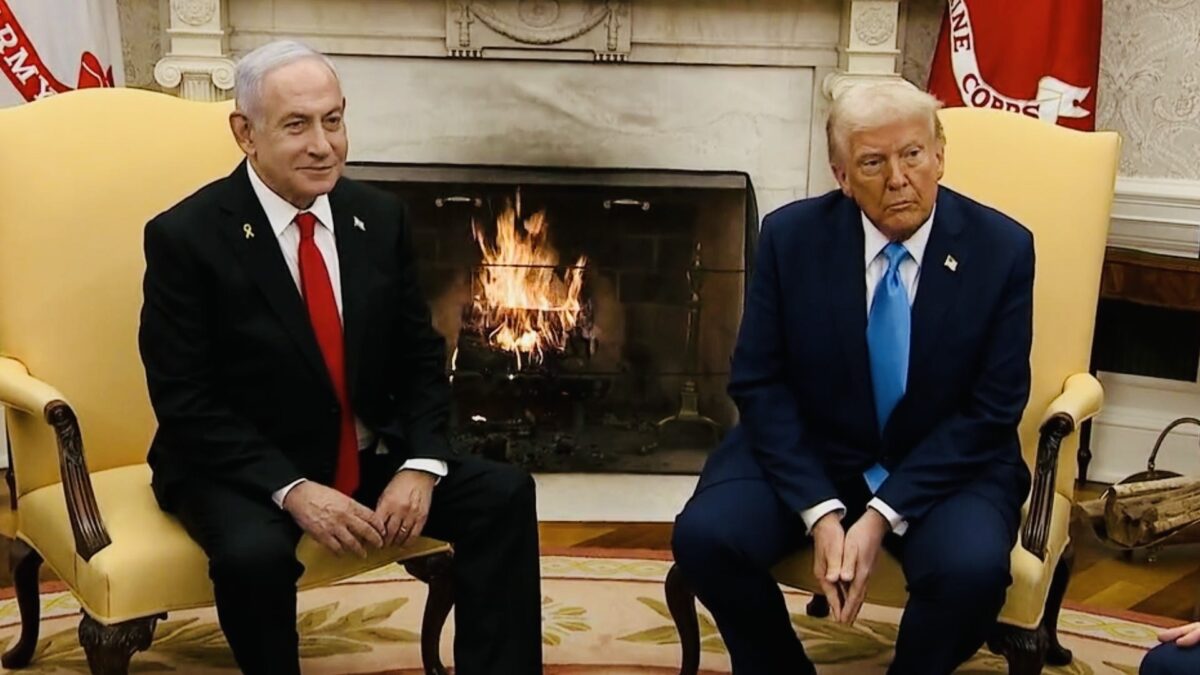Donald Trump dropped a bombshell during an extraordinary press conference with Prime Minister Benjamin Netanyahu in Washington on February 4. It sent shock waves across the Middle East, causing a great deal of dismay.
In one of the most stunning and far-reaching proposals ever presented by a sitting American president, Trump announced that the U.S. would assume control of the Gaza Strip, rebuild it, and permanently move its 2.2 million Palestinian inhabitants to Arab countries like Egypt and Jordan.
He doubled down on his scheme on February 6, saying that Gaza would be “turned over to the United States by Israel at the conclusion of fighting,” implying that he has no objection to Israel breaking the current ceasefire and finishing its lengthy war with Hamas.
Prior to arriving in Washington, Netanyahu said that the decisions he has made during the war “have already changed the face of the Middle East.” At the press conference, he enunciated goals that Israel has yet to fulfill in Gaza: “Destroy Hamas’ military and governing capabilities, secure the release of all our hostages, and ensure that Gaza never again poses a threat to Israel.”
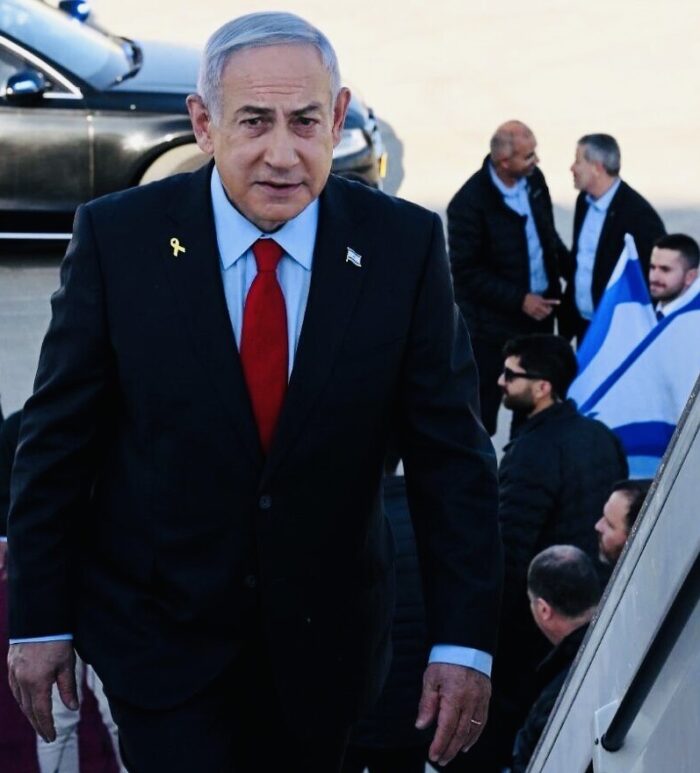
Trump unveiled his ambitious yet vague plan against the backdrop of a six-week, three-part ceasefire agreement to wind down the war. During the first phase, 33 Israeli hostages are supposed to be released in exchange for almost 2,000 Palestinian prisoners.
At first glance, Trump’s fanciful and costly proposal was at odds with his aversion to nation-building projects and entanglements in Middle Eastern conflicts. Yet, if he goes through with it, the Middle East will be shaken to its core.
At this moment, however, there is no certainty whether Trump is seriously interested in fixing Gaza, which has been a hotbed of Palestinian terrorism for decades. His plan may be a negotiating tactic or a trial balloon to test regional and international opinion regarding Gaza’s future and Israel’s integration into the region by means of a rapprochement with Saudi Arabia and other Arab states.
Whatever the case may be, this was not the first time he has talked about the need to relocate Gaza’s inhabitants to neighboring countries. Nor was it the only time he has related to Gaza from a real estate perspective.
On January 26, he told reporters that Gaza is a “demolition site right now,” as well as a “mess,” and should be “cleaned out.” He said he had asked Egypt and Jordan to accept Palestinian migrants.
Egypt, Jordan and Saudi Arabia have warned that a plan that encourages the “transfer or uprooting of Palestinians from their land” would undermine regional stability and the chances of peace between Israel and the Palestinians.
Egypt has reportedly warned that Trump’s proposal could undermine its peace treaty with Israel, a cornerstone of regional stability.
Jordan fears it would upset its demographic balance of power.
Palestinian leaders compare it to the nakba that dispossessed the Palestinians after the birth of Israel.
“Palestinians do not want to leave their land,” the foreign ministers of Jordan, Egypt, Saudi Arabia, Qatar and the United Arab Emirates declared unequivocally in a letter to U.S. Secretary of State Marco Rubio on February 4.
Last October, Trump, a former real estate developer, predicted that Gaza, if fully developed, could be “better than Monaco.”
Last year, Jared Kushner, Trump’s son-in-law and former senior adviser, described Gaza as “waterfront property that could be valuable.” He recommended that Gaza should be “cleaned up” and its population moved out.
Trump’s current special envoy to the Middle East, Steve Witkoff, addressed this theme a few days ago when he said that Palestinians do not necessarily need to live in Gaza to enjoy a better life.
“A better life is not necessarily tied to the physical space that you are in today,” said Witkoff, who visited Gaza last week to kickstart the first segment of Israel’s truce with Hamas. “A better life is about better opportunity, better financial conditions, better aspirations for you and your family. That doesn’t occur because you get to pitch a tent in the Gaza Strip and you’re surrounded by 30,000 munitions that could go off at any moment.”
By Witkoff’s estimate, Gaza today is “uninhabitable” and will probably remain so until it is reconstructed over a 10 to 15 year period.
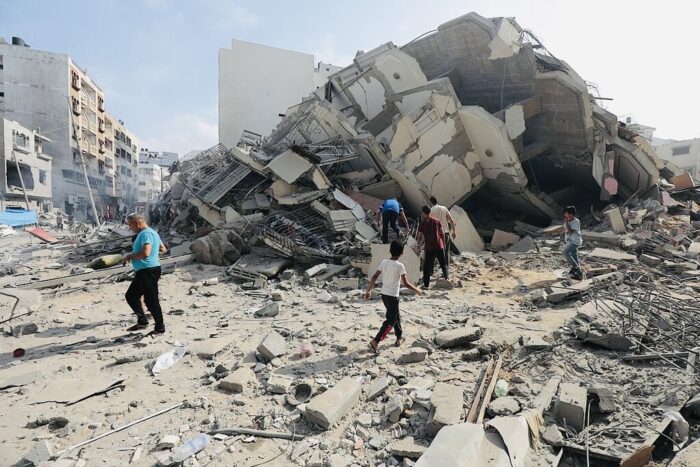
Nearly two-thirds of Gaza’s residential and commercial buildings have been destroyed and 90 percent of its residents have been forced from their homes since the Israeli armed forces launched a ferocious military campaign after Hamas’ terrorist attack in southern Israel on October 7, 2023. It claimed the lives of roughly 1,200 people and resulted in the abduction of 251 Israelis and foreigners.
After 15 months of war, Gaza has been reduced to a wasteland of shattered buildings and rubble, with little or no running water and electricity.
Trump claims the Palestinians “have no alternative” but to leave Gaza, which he described as a “hellhole.”
“I don’t think people should be going back to Gaza,” he said. “I think that Gaza has been very unlucky for them. They’ve lived like hell. They lived like you’re living in hell. Gaza is not a place for people to be living, and the only reason they want to go back, and I believe this strongly, is because they have no alternative.”
Trump promised to transform Gaza into “the Riviera of the Middle East” and pledged “to give people a chance to live in a beautiful community that’s safe and secure.”
Casting his radical idea within a humanitarian and economic framework, Trump said, “The U.S. will take over the Gaza Strip … We’ll own it.”
The United States, he added, would dispose of unexploded munitions, clear debris and reconstruct Gaza. He suggested that U.S. troops would provide security.
Trump spoke in broad generalities without divulging operational details or costs. He apparently informed only a few trusted aides of his astonishing intentions.
Trump’s proposal, which sounds surreal and perhaps delusional, has the potential to upend the pillars of U.S. Middle Eastern policy, which, until now, has rested on the hope that the future of Gaza and the Israeli-occupied West Bank is inextricably linked to a two-state solution.
The fly in the ointment is that the current Israeli government opposes Palestinian statehood, Saudi Arabia’s condition for normalizing relations with Israel.
Trump’s Gaza scheme appears to be a non-starter, having been denounced as ethnic cleansing and a violation of international law by a host of critics ranging from Hamas and the Palestinian Authority to the European Union and Russia and China.
The secretary general of the United Nations also has criticized it, and even Republican senators and Trump loyalists such as Rand Paul of Kentucky and Lindsey Graham of South Carolina have expressed misgivings.
Netanyahu, the first foreign leader to be invited to the U.S. since Trump assumed office on January 20, reacted positively. “You’ve picked up right where you left off,” he said after complimenting Trump as Israel’s “greatest friend in the White House.”
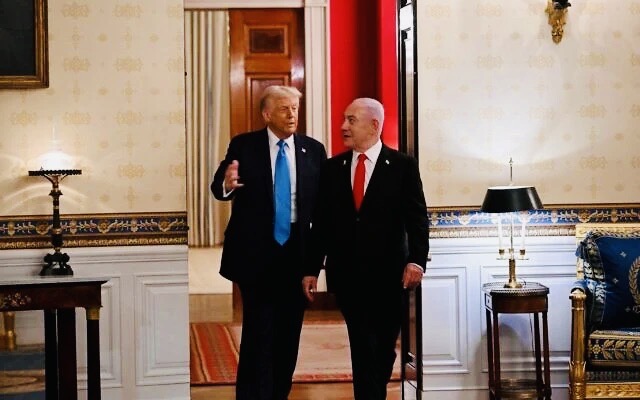
“You say things others refuse to say,” he said. “And after the jaws drop, people scratch their heads and they say, ‘You know he’s right.’” Praising Trump’s “willingness to think outside the box,”Netanyahu said his proposal could “change history” and was worth “paying attention to.”
Israeli Defence Minister Israel Katz welcomed Trump’s “courageous plan,” saying it would enable “a wide swath” of Palestinians to emigrate to “various places around the world.”
Hailing it as a blueprint that can lead to “a demilitarized Gaza that poses no threat in the post-Hamas era,” Katz said he had ordered the army to prepare plans by which any Gaza resident can depart in accordance with global practices.
Israeli Finance Minister Bezalel Smotrich, who has called for the resettlement of Gaza and the “voluntary” departure of Palestinians, hailed it as “the true answer” to October 7. “Those who committed the most horrific massacre on our territory will lose their own territory forever,” he said.
His colleague, Itamar Ben-Gvir, who recently resigned as minister of national security, said, “Now it is clear: this is the only solution to the Gaza problem. This is the strategy for the ‘day after’ in Gaza.”
It would appear that the Trump administration is committed to this plan, notwithstanding clarifications offered by Rubio and Witkoff yesterday.
Rubio explained that Trump wants to resettle Gazans on a temporary basis and to reconstruct rather than to seize Gaza.
Witkoff said that Trump “doesn’t want to put any U.S. troops on the ground, and he doesn’t want to spend any U.S. dollars at all” on Gaza.
Judging by their comments, Trump’s proposal has yet to fleshed out, but it is far from certain whether it will ever see the light of day.
